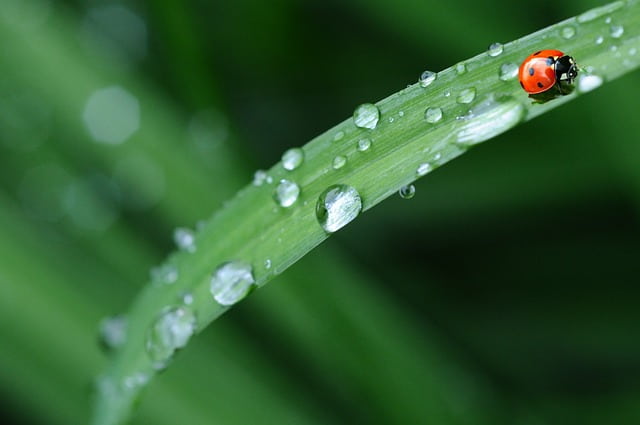Do Lady Bugs Bite?
Ladybug, scientifically known as Coccinellidae, is the general name for small, colorful insects. They usually have a brightly colored and mottled appearance. Ladybugs are usually red, orange or yellow in color with black spots on them. However, the variety of colors and patterns is quite wide. Some are black and may have white spots.
Ladybugs generally feed by preying on plant-dwelling pests, especially insects such as aphids. Therefore, they are considered a natural pest control element in agricultural fields and gardens.
Ladybugs generally go through four different stages: egg, larva, pupa and adult. Female ladybugs usually lay their eggs under leaves or on plant stems. Baby ladybugs feed on pests during their larval stage, usually for several weeks after hatching. Then they pass into the pupa stage and turn into adult ladybugs.
There are hundreds of different species of ladybugs around the world. Each species can have different colors and patterns. This color diversity may be linked to their hunting strategies and the environment in which they live.
Ladybugs are insects believed to bring luck and good fortune in many cultures. Especially holding a ladybug or seeing it sit on it is considered a harbinger of good luck in many cultures.
Some species of ladybugs have the ability to spray some type of chemical substance in case of danger. Additionally, some species can make sounds by vibrating their wings.
Ladybugs have many important functions such as maintaining the balance of nature, controlling pests and playing an important role in the ecosystem. They are also a culturally important symbol.

Do Lady Bugs Bite?
In general, ladybugs do not bite humans. Ladybugs do not tend to harm humans because they mostly feed on harmful insects that live on plants. Additionally, ladybug mouth structures are generally adapted for sucking plant sap or small insects, not for biting humans.
However, as with every living creature, ladybugs may have individual behavioral differences. So, in rare cases, you may experience a mild bite from a ladybug, but this is usually an exceptional case. Because ladybugs do not tend to be aggressive towards humans in nature, they are generally considered harmless.
Interesting Facts About Ladybugs
- Color Variety: Although ladybugs are most commonly known for being red or orange in color, ladybugs can also be found in black, yellow, blue and even pink. Color diversity varies between species.
- Odorless Wings: Ladybugs generally do not emit a scent when they open their wings. However, some species may emit a foul odor when they spread their wings as a defense mechanism.
- Different Numbers of Spots: The number of black spots on ladybugs varies. Some species may have 2 to 24 spots.
- Longevity: Ladybugs live quite long compared to other insect species. They may last several years. Some species hibernate, especially in cold weather conditions, and thus can live long lives.
- High-Speed Flying Ability: Ladybugs can fly very fast thanks to the light structure of their bodies. These features can be useful when chasing prey or escaping quickly in times of danger.
- Hunting Skill: Ladybugs are very effective hunters, especially at controlling pests such as aphids. A ladybug can eat thousands of aphids in its lifetime.
- Hibernation: During the cold winter months, some ladybug species hibernate. In this process, their metabolism slows down and they save energy.
- Natural Enemy Defense: Some ladybug species have developed defense mechanisms against their natural enemies. For example, some species accumulate and secrete toxins in their bodies.
- Asian Ladybugs: Some species of ladybugs originating from Asia have been considered invasive species in some regions in order to compete with other species and harm local ecosystems.
- Various Names: Ladybugs are given different names in different cultures. For example, it is called “ladybug” in Turkish, “uğurböceği” in English, “Marienkäfer,” in German, and “coccinelle” in French.
Our article on multiple sclerosis may also attract your attention.
